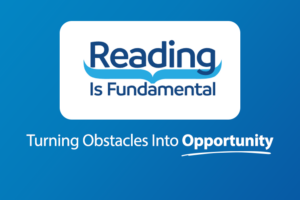Emma Kieran | April 18, 2016
Is your organization adaptable to change?
If you’re like the leaders at most organizations, this will sound familiar.
The week before the first Board meeting of the new fiscal year, you spend days – and often nights – working and working and working to come up with new ideas – how you’ll reach more donors, raise more money, gain more visibility. You think of every question that Doubting Debra and Skeptical Sam might ask and find ways to do more with less. You are sure you’ve come up with new ways of doing things that will change your organization for the better.
As you walk into the Board meeting you actually think to yourself, “This is the year when we’ll actually meet the 10% increase in sustainable revenue that the Board put in the budget!” An hour later, you walk out deflated and throw your presentation in the trash because your new ideas were met with resistance. Skeptical Sam told you “That’s not how we do things around here.” Doubting Debra worried that “We haven’t tried that before. How do we know we’ll be successful?” The rest of the Board, even the few who were intrigued with your ideas, slowly nodded in agreement. And then they voted to use last year’s efforts as a road map for this year’s and just “tweak things a bit.” You, however, know that small adjustments could lead to reaching your goal, but won’t lead to transformational success.
I have good news and bad news: you aren’t alone.
We’ve all faced resistance to change in our nonprofits (and for-profits, for that matter, but that’s another blog post altogether). Someone suggests something new or different and, if we’re honest, even we were reluctant to go along. Change means giving up on what you’ve always done in order to test something that might fail.
Stability, on the other hand, is comforting and a whole lot easier. Often, we’re comfortable doing what we’ve been doing because we know what we’ll get. But, when we embrace stability, are we missing out on achieving great things?
For a long time, organizations have searched for the key to stability: a stable workforce, stable revenue, a stable volunteer and donor pool. Stable is just another word for safe, unvarying, solid. But in an ever changing and ever more complex world, stability is not only difficult, but imprudent. The most successful organizations, especially nonprofits, need to change regularly. Organizations that succeed embrace rapid change, are willing to hang out in the messiness that IS change, and are able to sustain it because they have an organizational focus on change management and are agile, adaptive and resilient.
Before you set your organization on a path towards change, you first have to understand what it is. For organizations (and people, really), change means undertaking an initiative that helps address key issues, improve performance, and seize new opportunities. Change requires a focus on goals, roles, processes and the people that perform these functions rather than just on doing what you’ve always done.
Embracing change requires five steps:
- Entry: can you identify your organization’s need for change?
- Diagnosis: what data can you collect and analysis to gain more insight?
- Planning: what does the data show and how does that inform your actions?
- Intervention: what changes do you need to address based on the diagnosis and plan?
- Sustainability: how will you evaluate your change to date and make sure the changes will stick?
While all organizations facing change need to follow these phases in some form, you’ll need to tailor your approach to your particular type of organization. There are two types of organizations: “loosely coupled” and “tightly coupled.” In organizations that are loosely coupled, like a university, departments are interdependent. What happens in the Psychology Department doesn’t necessarily affect what happens in the finance office. In tightly coupled organizations, by contrast, different parts of the organization are interdependent. At a university, you’ll need to approach change in a more improvisational manner and on a smaller scale, while with the U.S. Marine Corps you need to plan for change to happen more episodically and on a much larger scale[1]
There’s more bad news if you are ready to embrace change: just because you approach change in the right way doesn’t mean that it will be sustained. Unfortunately, the odds are stacked against you. Change efforts fail up to 70% of the time.[2]
This sounds daunting, I know. But here’s the good news: you can improve your potential for success:
- Develop a deep commitment to change within your organization and with those who lead. Resistance is inevitable, but resistance from the top is paralyzing.
- Create the right frame for change. Involve the right people, the right external help, and devote the right resources.
- Do the hard work. Don’t fall back into what’s comfortable and resist being overtaken by external and internal factors.
There is no silver bullet for success in change management. When in doubt, slow down, secure engagement, and collaborate to develop the right strategies for your organization.
If you do, chances are that after the next Board meeting, Doubting Debra and Skeptical Sam might be willing to try something new.
____

[1] Making sense of the organization, Karl Weick, Wiley-Blackwell, 2001
[2] Leading Change, John P. Kotter, Harvard Business Review Press, 2011

Get Resources and Insights Straight To Your Inbox
Explore More Articles
Workplace Fundraising + Volunteering Summit (April 2nd and 3rd, 2025)
Join us in attending this virtual summit! The America’s Charities team is joining up with other leading voices in the workplace giving space for a…
Read ArticleThe Time to Act is Now
The results of the 2024 National Assessment of Educational Progress (NAEP) are in, and the findings are, in a word, heartbreaking. This assessment serves as…
Read ArticleOpen Position: Non-Profit Account Manager, Employee Assistance Funds & Scholarships (Remote – Full Time)
We are professional, agile, customer-centric and our goal is to inspire employees and organizations to support causes they care about. We help nonprofits fundraise unrestricted,…
Read ArticleGet Resources and Insights Straight To Your Inbox
Receive our monthly/bi-monthly newsletter filled with information about causes, nonprofit impact, and topics important for corporate social responsibility and employee engagement professionals, including disaster response, workplace giving, matching gifts, employee assistance funds, volunteering, scholarship award program management, grantmaking, and other philanthropic initiatives.




